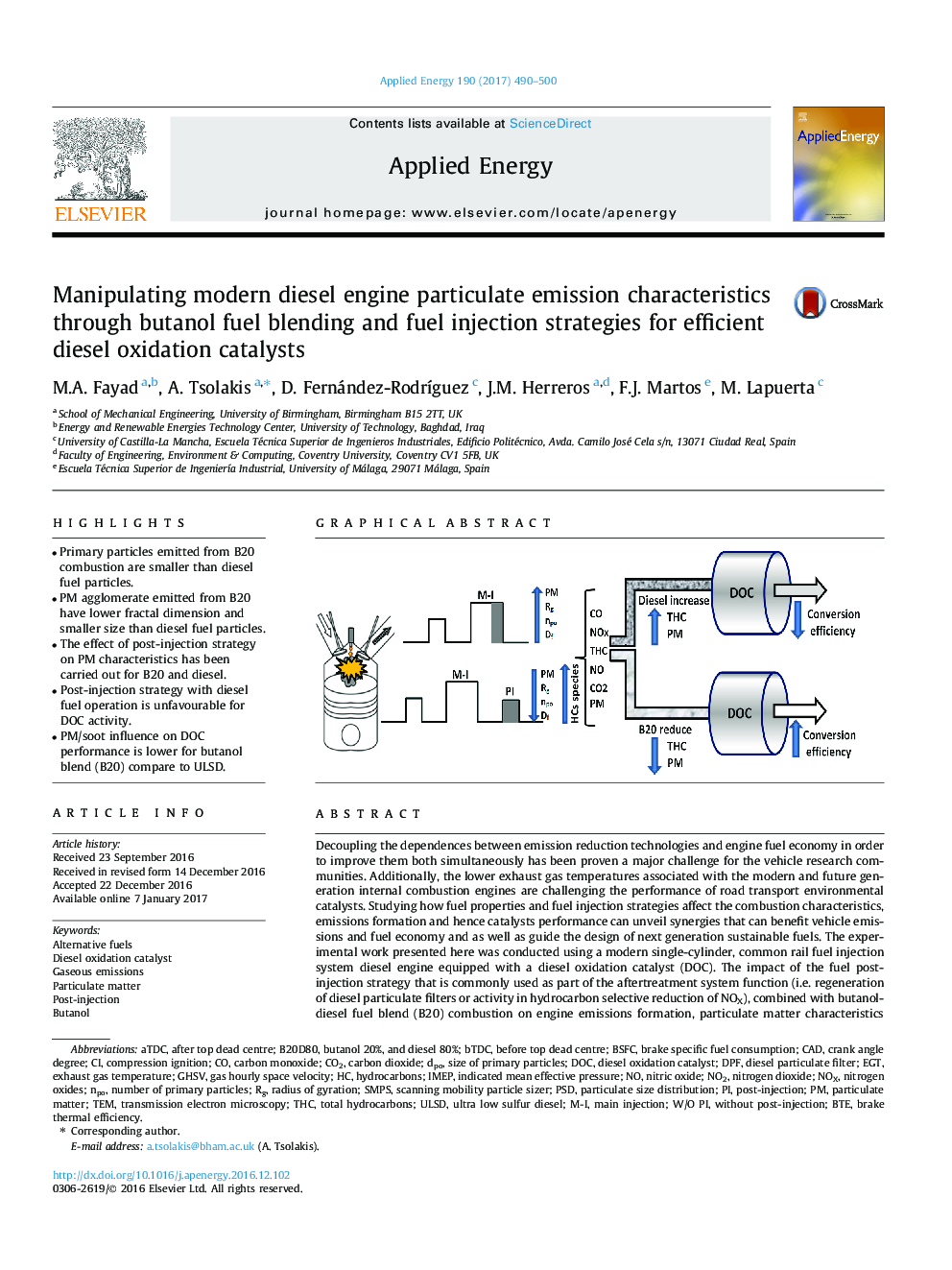| کد مقاله | کد نشریه | سال انتشار | مقاله انگلیسی | نسخه تمام متن |
|---|---|---|---|---|
| 6478538 | 1428100 | 2017 | 11 صفحه PDF | دانلود رایگان |
- Primary particles emitted from B20 combustion are smaller than diesel fuel particles.
- PM agglomerate emitted from B20 have lower fractal dimension and smaller size than diesel fuel particles.
- The effect of post-injection strategy on PM characteristics has been carried out for B20 and diesel.
- Post-injection strategy with diesel fuel operation is unfavourable for DOC activity.
- PM/soot influence on DOC performance is lower for butanol blend (B20) compare to ULSD.
Decoupling the dependences between emission reduction technologies and engine fuel economy in order to improve them both simultaneously has been proven a major challenge for the vehicle research communities. Additionally, the lower exhaust gas temperatures associated with the modern and future generation internal combustion engines are challenging the performance of road transport environmental catalysts. Studying how fuel properties and fuel injection strategies affect the combustion characteristics, emissions formation and hence catalysts performance can unveil synergies that can benefit vehicle emissions and fuel economy and as well as guide the design of next generation sustainable fuels. The experimental work presented here was conducted using a modern single-cylinder, common rail fuel injection system diesel engine equipped with a diesel oxidation catalyst (DOC). The impact of the fuel post-injection strategy that is commonly used as part of the aftertreatment system function (i.e. regeneration of diesel particulate filters or activity in hydrocarbon selective reduction of NOX), combined with butanol-diesel fuel blend (B20) combustion on engine emissions formation, particulate matter characteristics (size distribution, morphology and structure) and oxidation catalyst activity were studied. It was found that post-injection produced lower PM concentration and modified the soot morphological parameters by reducing the number of primary particles (npo), the radius of gyration (Rg), and the fractal dimension (Df). The results were compared with the engine operation on diesel fuel. The increased concentration of HC and CO in the exhaust as a result of the diesel fuel post-injection at the studied exhaust conditions (i.e. T = 300 °C) led in the reduction of the DOC activity due to the increased competition of species for active sites. This effect was improved the combustion of B20 when compared to diesel.
163
Journal: Applied Energy - Volume 190, 15 March 2017, Pages 490-500
